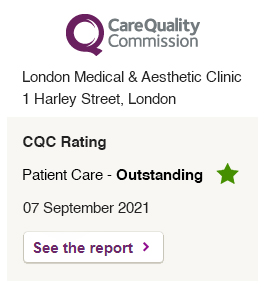The summer months are drawing closer and both patients and practitioners will want to make the most of the seasonal heat, however at the same time they must try to protect themselves from the harmful ultraviolet (UV) radiation.

Ultraviolet radiation
When the sun comes out it is easy to forget about the harmful UV rays and immediately begin basking in the sunlight, but these harmful UV rays should always remain a concern.
UV radiation is part of the electromagnetic spectrum that reaches the earth from the sun. These wavelengths cannot be seen with the naked eye as they are shorter than visible light. They are divided into three main types, UVA, UVB and UVC. The UVA rays have the longest wavelengths, this is followed by the UVB rays and the UVC rays. UVC rays would cause the most damage to humans but the wavelengths are so short that they are absorbed by the ozone layer and do not reach the earth. The ones to be wary of are the UVA and UVB rays as these rays do penetrate the atmosphere.
95% of the damage done to the skin is caused by UVA rays whereas only UVB rays only cause 5% of damage. UVA rays are present all year round, they are not blocked by grass or clouds, and they are present during all daylight hours throughout all seasons of the year. UVA rays penetrate deeper into the skin that UVB rays and are a major factor in skin aging.
UVA has also been shown to cause skin cancer as it can damage the keratinocytes in the epidermis. UVB rays are mostly responsible for the thickening and the darkening of the skin layers. Too much of this exposure and the burning of the skin can also lead to skin cancer.

Protection
There is an abundance of products available that claim to protect the skin from sun damage. This makes it difficult to know which one will work the best. However there is a substantial difference in quality between sunscreen available in clinics and those offered on the high street. The high street brands may sometimes be misleading as they only display the sun protection factor (SPF). The SPF only shows how effective the product is at preventing the UVB rays from causing damage. This leads some people to think that they are being fully protected using a high SPF product while the UVA rays are still causing damage. Zein Obagi Skin Health broad spectrum SPFs are one of the best and some of them even have a slight tint. They are a good option for those who are put off from wearing sunscreens as they do not want to appear too white and it also appears sheer. It has the highest protection from UVA rays which is the PA+++ rating.

Application
Many studies have shown that people continuously fail to adequately apply sunscreen before they go out in the sun and also fail to reapply the sunscreen every two hours as is recommended. If on holidays in a very hot climate and if in the water a lot of the time then sunscreen needs to be applied very frequently. The best advice is to get into the habit of applying it in the morning all year round.
What to be aware of
What many are not aware of is that certain compounds can make the skin even more sensitive by reflecting the UV rays onto the skin. 15% of harmful rays are reflected by sand and 5-10% of the harmful rays are reflected by the water. When patients are on skiing holidays it is important to be aware that 75% of the harmful rays are reflected back off the snow so sun protection is essential and they need to ensure that they are covered up adequately.

Patients also need to be wary of using makeup as sun protection. Seven times the amount of normal makeup would need to be applied to in order to get the full SPF protection and fourteen times the normal amount of powder would need to be applied.
Dr Ayham Al-Ayoubi: Another concern is how Vitamin D can be absorbed if people are wearing sunblock. One in five is vitamin D deficient. It is advisable to get some sun exposure before 10am or after 4pm and in between those hours adequate sun protection must be worn.
The overall level of education that patients have with regards to sun protection varies and in most cases is quite minimal. However more people are beginning to become more aware. The main problem lies behind the fact that many will choose the sunscreen brand that they know or what is on offer without actually looking at the ingredients. It is important to remember that people cannot always rely on sunscreen alone either.





